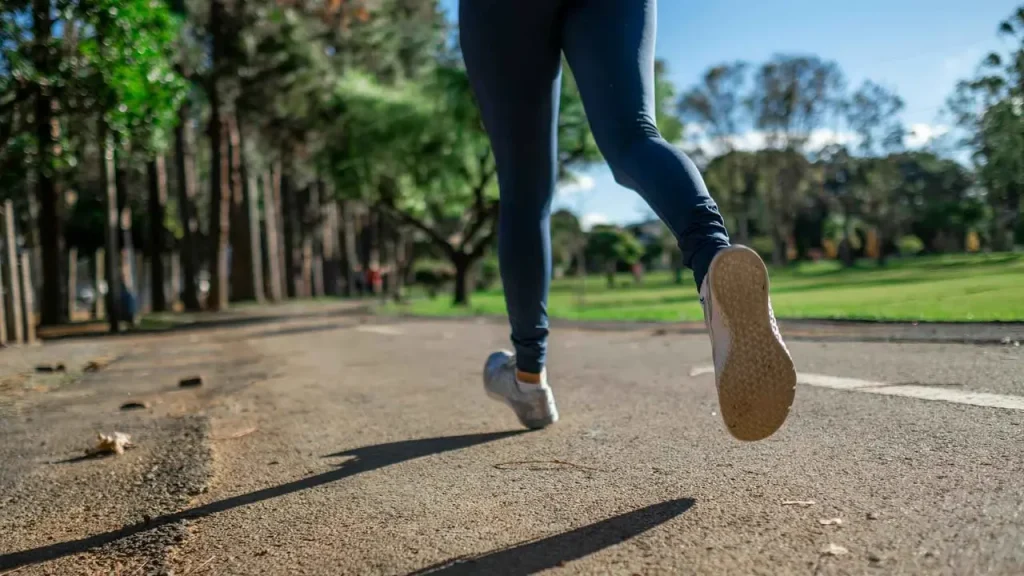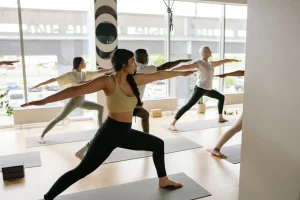
Essential Running Tips for Beginners to Get Started Right
Let’s be brutally honest. The idea of starting to run can be awful. Absolutely dreadful. You picture yourself gasping for air after thirty seconds, side stitches cramping your style, while seasoned runners glide past you effortlessly. I’ve been there. My first run was a pathetic shuffle around the block that ended in me dramatically leaning against a lamppost. But here’s the secret they don’t always tell you: everyone starts there. Every single runner you see was once a beginner. And with the right approach and some solid running tips for beginners, you can bypass a lot of the frustration and find the actual joy in it. Seriously. It exists.
Starting Your Running Journey: A Beginner’s Guide
Embarking on this journey is more of a mental game than a physical one at first. Forget about speed, forget about distance. Your only goal is to start. That’s it. The first step is often the hardest, but once you take it, you’re officially a runner. This guide is designed to be your companion, offering practical advice that cuts through the noise. We’re not talking about qualifying for Boston here; we’re talking about making it to the next mailbox without wanting to quit. This is fundamentally how to start running for complete beginners; it’s about building a foundation one step at a time. The path isn’t always easy, and some days you’ll hate it, but sticking with it is transformative. You just have to trust the process.
Essential Gear for New Runners
You’re going to see a million ads for high-tech gadgets, compression everything, and fancy supplements. Ignore almost all of it. You don’t need it, at least not yet. Your essential running gear checklist for beginners is surprisingly short. You need comfortable clothes that won’t chafe (think moisture-wicking, not cotton) and a good sports bra for women.
But the one area where you absolutely cannot skimp is your footwear. I can’t stress this enough. Getting the best running shoes for new runners comfort is the single most important investment you will make. Go to a specialty running store, have them analyze your gait, and try on a dozen pairs. Your feet will thank you. Your knees will thank you. Bad shoes are a direct path to injury, and nothing kills motivation faster than being in pain. This is crucial advice.
Warming Up: Preparing Your Body for a Run
Skipping the warm-up is tempting. You’re short on time, you feel fine, what’s the point? The point is injury prevention. A cold engine doesn’t perform well, and neither do cold muscles. A proper warm-up sends blood flowing to your muscles, raises your core temperature, and prepares your body for the stress of running. This isn’t about static stretching—don’t do that. You want dynamic movements. Think five to ten minutes of brisk walking, butt kicks, high knees, and leg swings. These effective warm up exercises for beginner runners are non-negotiable if you want to stay healthy. Trust me, spending five minutes warming up is infinitely better than spending five weeks on the couch with a pulled muscle. It’s a simple rule to follow.
Mastering the Basics: Proper Running Form
Okay, let’s talk about form. It sounds intimidating, but minor tweaks can make a massive difference in your efficiency and comfort. You don’t need to look like an Olympian, just avoid the most common pitfalls. The core of understanding proper running form for new athletes is to run tall. Imagine a string pulling you up from the crown of your head. Keep your shoulders relaxed and down, away from your ears. Let your arms swing forward and back, not across your body. Clenching your fists wastes energy; keep your hands loose. These little adjustments collectively save a ton of energy, and it’s a tip that pays dividends forever.
Understanding Your Stride and Foot Strike
Don’t fall down the rabbit hole of foot strike debates online. Heel striking, midfoot, forefoot it can be overwhelming. Here’s a simpler way to think about it: try to have your feet land underneath your body, not way out in front of you. Overstriding—reaching your front foot too far forward—acts like a brake with every step and puts a ton of stress on your joints. It’s a common mistake. Instead, focus on taking shorter, quicker, lighter steps. Your cadence, or steps per minute, will naturally increase, and you’ll find a rhythm that feels more efficient. Don’t force a different foot strike; just focus on where your foot lands in relation to your body.
Breathing Techniques for Endurance
Feels silly to need tips on breathing, right? You’ve been doing it your whole life. But breathing efficiently while running is a learned skill. Many new runners are shallow chest breathers, which leads to side stitches and feeling out of breath quickly. The goal is deep, diaphragmatic (belly) breathing. As you run, focus on your belly expanding as you inhale and contracting as you exhale. This allows your lungs to take in more oxygen. Finding a rhythm can also help, like breathing in for three steps and out for two. Mastering proper breathing techniques while running beginners will dramatically improve your stamina and comfort. This is one of the most underrated skills for new runners.
Your First Steps: Building a Training Plan
Just going out and running as far as you can is a recipe for burnout and injury. You need a plan. A structured approach provides purpose and prevents you from doing too much, too soon. A great starting point is the famous couch to 5k training plan for beginners, which is designed specifically for people starting from scratch. Whether you follow a pre-made plan or create your own, consistency is key. A good plan will also help if you have specific goals, leading to a beginner running schedule for weight loss, for example. When people ask how often should a beginner run per week, the answer is usually three to four non-consecutive days. This provides enough stimulus for improvement while allowing for crucial recovery. The plan is your roadmap; having one is a vital piece of the puzzle.
The Walk-Run Method Explained
The walk-run method is your best friend. It is not cheating. Let me repeat: it is NOT cheating. It’s the single most effective way to build endurance without over-stressing your body. The concept is simple: you run for a set interval, then walk for a set interval, and repeat. You might start with running for one minute and walking for two minutes. As you get stronger, you gradually increase the running portion and decrease the walking. It allows your cardiovascular system to adapt while giving your muscles and joints a regular break. It’s an essential tool for building endurance.
Gradually Increasing Your Mileage
The enthusiasm of a new runner is a dangerous thing. You have a great run and immediately want to double your distance the next day. Don’t. This is how you get hurt. The golden rule for gradually increasing running mileage beginner runners must follow is the 10% rule: don’t increase your total weekly mileage by more than 10% from the previous week. It feels painfully slow, I know. But this gradual progression allows your bones, tendons, and muscles to adapt to the new stress you’re putting on them. Patience now means you’ll still be running months from now.
Listening to Your Body: Preventing Overtraining
Your body is incredibly smart. It sends you signals all the time—soreness, fatigue, sharp pain. Your job is to learn to listen to them. There’s a huge difference between the discomfort of pushing yourself and actual pain. Muscle soreness is normal; sharp, stabbing, or persistent pain is not. Pushing through pain is a terrible idea. Overtraining is real, and it can manifest as constant fatigue, irritability, poor sleep, and a plateau in your progress. Learning to recognize these signs is a key skill for longevity in the sport and a cornerstone of sustainable training.
Fueling Your Runs: Nutrition and Hydration Essentials
You can’t outrun a bad diet. What you eat directly impacts your performance and recovery. A balanced diet with adequate carbohydrates for energy, protein for muscle repair, and healthy fats is crucial. You don’t need a complicated eating schedule, just a mindful approach. This basic nutrition guide for beginner long distance runners will set you on the right path.
Best Foods for Pre-Run Energy
The question of what to eat before running in the morning beginner runners often ask is a great one. You want something easily digestible and rich in carbohydrates for quick energy. A small banana, a piece of toast with a thin layer of peanut butter, or a small bowl of oatmeal about 30-60 minutes before your run are all excellent choices. Avoid anything high in fat, fiber, or protein right before a run, as it can sit heavily in your stomach and cause digestive issues. Nobody wants that. This is important advice.
Staying Hydrated On and Off the Track
Hydration isn’t just about chugging water right before you run. It’s an all-day affair. Aim to drink water consistently throughout the day. Dehydration can tank your performance, cause headaches, and make you feel sluggish. For runs under an hour, you typically don’t need to carry water with you, as long as you’re well-hydrated beforehand. Just be sure to rehydrate afterward. It’s a simple, but critical, part of your routine.
Beyond the Run: Recovery and Injury Prevention
What you do after your run is just as important as the run itself. Recovery is when your body repairs and strengthens itself. Skimp on recovery, and you’re setting yourself up for failure. The process of how to prevent common running injuries beginners face starts the moment your run ends. A solid recovery plan is key.
The Importance of Stretching and Cool-Downs
Just as you warm up, you must cool down. Don’t just stop running and sit down. End every run with five to ten minutes of walking to allow your heart rate to come down gradually. After that, it’s time for some static stretching. This is when you hold stretches for 20-30 seconds. A good stretching routine after running for beginners will focus on your hamstrings, quadriceps, calves, and glutes. This improves flexibility and can help alleviate muscle soreness.
Common Running Injuries and How to Avoid Them
Shin splints, runner’s knee, plantar fasciitis—the list of potential ailments can be scary. But most are preventable. They often stem from doing too much, too soon, wearing the wrong shoes, or having poor form. Following the 10% rule, getting proper shoes, and working on your form are your best defenses. And when it comes to dealing with muscle soreness after first run, remember that some initial aches are normal as your body adapts. But sharp pain is a red flag. This knowledge is your armor.
Rest Days: Why They Are Non-Negotiable
Rest is not a four-letter word. Your muscles don’t get stronger during your runs; they get stronger during the recovery periods in between. Rest days are when the magic happens. The importance of rest days for beginner runners cannot be overstated. Skipping them in an attempt to get fit faster will backfire, leading to fatigue and injury. Embrace your days off. You’ve earned them. Any good training plan will emphasize this.
Staying Motivated: Making Running a Habit
The physical challenges of running are temporary. The mental challenge of staying motivated is forever. There will be days you don’t want to go. Days when the couch feels so much better. The key is building a habit that can override your fleeting lack of motivation. And that’s where these tips for staying motivated as a new runner come in handy. It’s a vital part of the process.
Setting Realistic Goals and Tracking Progress
Chasing a huge, audacious goal is inspiring, but it’s the small, achievable ones that keep you going week to week. Your first goal might be to run for 10 minutes continuously. Then a full mile. Then a 5k. Celebrate these milestones! Using one of the best running apps to track progress beginners can easily find will show you how far you’ve come, which is a powerful motivator on days you feel like you’re going nowhere. This approach is about playing the long game.
Finding Your Running Community
Running doesn’t have to be a solo sport. Sharing your struggles and successes with others is incredibly powerful. Knowing someone is expecting you for a run is a great way to ensure you show up. So, where to find local running groups for beginners? Check local running stores, community centers, or search on social media. A running buddy or group can provide accountability, camaraderie, and a whole lot of fun. This final tip might be the most important.
Embracing the Runner’s Path: Your Journey Continues
There is no finish line. That’s the beauty of it. Whether your goal is weight loss, mental clarity, or simply proving to yourself that you can, running is a continuous journey of self-discovery. There will be amazing runs that make you feel invincible and terrible runs that make you question everything. Embrace them all. They are all part of the process. This advice is just the starting blocks. The real adventure is what you make of it. Now, go for a run. Or a walk. Just get out there. You’ve got this.







